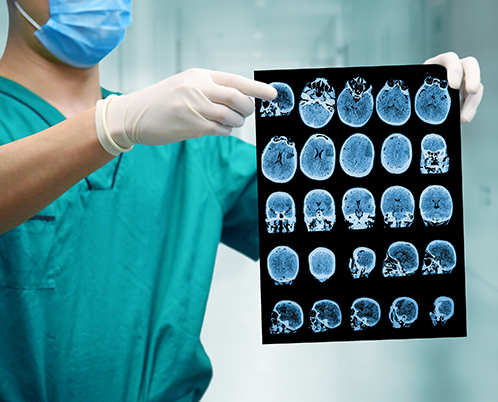Oncology
Our tests provide valuable insights into clinically relevant alterations in DNA that drive cancer growth, help transform targeted therapy, immunotherapy, and chemotherapy clinical trials into viable cancer treatment options.
More Treatment Options with Greater Precision For Each Unique Cancer.
Each cancer is unique and each tumor can vary at the molecular level.
Novogene’s next-generation sequencing-based assay detects genomic alterations relevant for the diagnosis and treatment of solid tumors according to clinical guidelines and medical literature. This NGS assay includes cancer immunotherapy biomarkers, such as Tumor Mutational Burden (TMB), Blood Tumor Mutational Burden (bTMB), Microsatellite Instability (MSI) and four forms of genomic alterations: Single Nucleotide Variant (SNV), Insertion/Deletion (InDel), Copy Number Variation (CNV), and Fusion. Our reports present the mutations detected in the submitted patient sample and information regarding approved therapies, clinical trials and other scientific findings.

What we offer?
| Services | NovoPM™ 2.0
DETAILS |
NovoFocus™ CR DETAILS |
|---|---|---|
| Service Features/ Analysis Results | For All Solid Tumors | For Multiple Cancers |
| Evaluates Targeted, Immune and Chemo Therapy | ||
| Predicts Immunotherapy Responses | Evaluates Targeted and Chemo Therapy | |
| Screens 484 Cancer-related Genes | Screens 47 NSCLC-related Genes |
Step 1:
Send us Patient's Sample
Step 2:
Sample Preparation
Step 3:
Library preparation & Sequencing
Step 4:
Bioinformatics Analysis
Step 5:
Actionable report
Step 1:
Send us Patient's Sample
Step 2:
Sample Preparation
Step 3:
Library preparation & Sequencing
Step 4:
Bioinformatics Analysis
Step 5:
Actionable report
Frequently asked questions about our diagnostic process
1. What is precision medicine?
Precision Medicine is an emerging approach to disease prevention and treatment that takes into account the variation in genetics, environment, and lifestyle between individuals.
2. How can cancer patients benefit from precision medicine treatment?
Precision Medicine is a novel approach to cancer treatment. The Comprehensive Genomic Profiling (CGP) test can help patients pinpoint mutated genes and enables Novogene to provide interpretation of alterations as well as any corresponding therapy instructions. Ideally, upon implementation of the suggested therapies, patient condition will improve in a short time span and unnecessary side effects will be avoided, since the medical treatment is specifically tailored to the genetics of the patient.
3. Which genetic test is right for me?
Genetic testing can give you and your doctor more information about your cancer. This information can help your doctor determine the most appropriate treatment strategy. Since cancer treatment is often complicated by the type of cancer, the physical condition of the patient, and the patient’s medication history, Novogene recommends discussing suitable testing products and timing with your physician, so as to enhance testing effectiveness.
4. What is the difference between Novogene's clinical oncology testing service and hospital pathology testing programs?
Novogene's clinical oncology testing performs multi-gene testing for cancer patients. This testing service is different from the single-gene testing program available in hospitals, as it can provide complete genetic alteration analysis on genes included in the testing panel.
5. What information is provided in Novogene's report?
We provide information pertaining to genetic mutations in addition to related interpretation, medication information, clinical trials information and related references.
Results & Reporting

Information about identified genomic alterations of all types and interpretation of results.
Early detection provides the opportunity to maximize health outcomes for your high-risk patient groups with patient-tailored screening programs, preventive measeures and proactive treatment.
Information about identified genomic alterations of all types and interpretation of results.
Early detection provides the opportunity to maximize health outcomes for your high-risk patient groups with patient-tailored screening programs, preventive measeures and proactive treatment.
More resources

